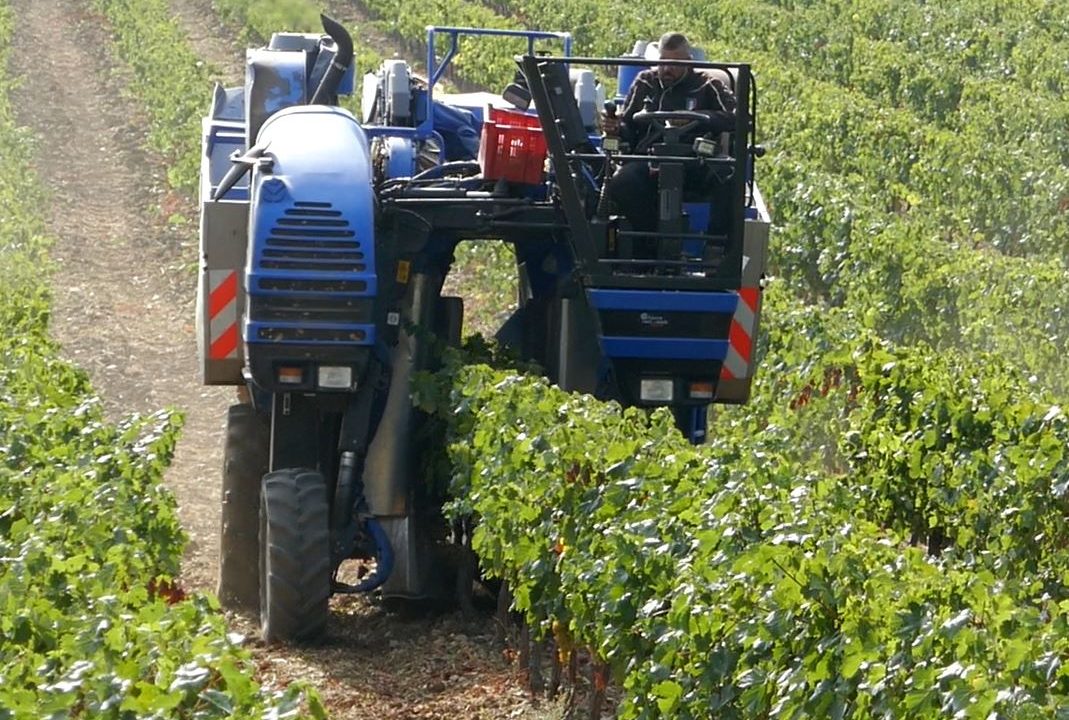All of France
For all of France, the wine harvest is estimated to end up at 44.5 million hl, which is roughly the average for the last 5 years, but there are large variations between different regions. Regions that coped well with the forces of the weather, as well as by having the “water reservoirs” replenished after the drought in 2022, and get increased harvests are, for example, Loire, Burgundy, and Alsace. The regions that had major problems during the year are South-West France with Bordeaux which was affected by leaf mould, mainly downy mildew, and also hail, and southern Languedoc and Roussillon which still have an extreme drought which soon threatens to kill the vines.
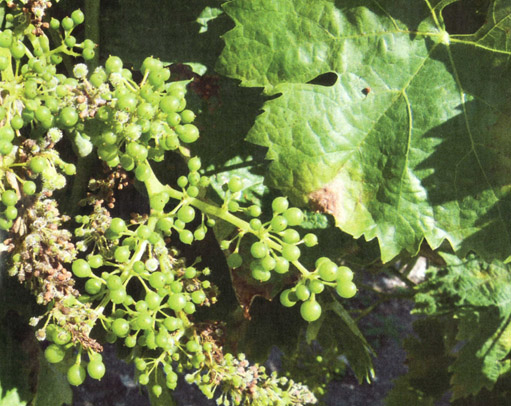
Downy mildew
France the biggest wine country in 2023?!
Italy, France, and Spain are usually the three largest wine-producing countries, and since France relatively speaking in the “average” between the regions has done well while the other countries have had problems, France could become the largest wine producer in 2023.
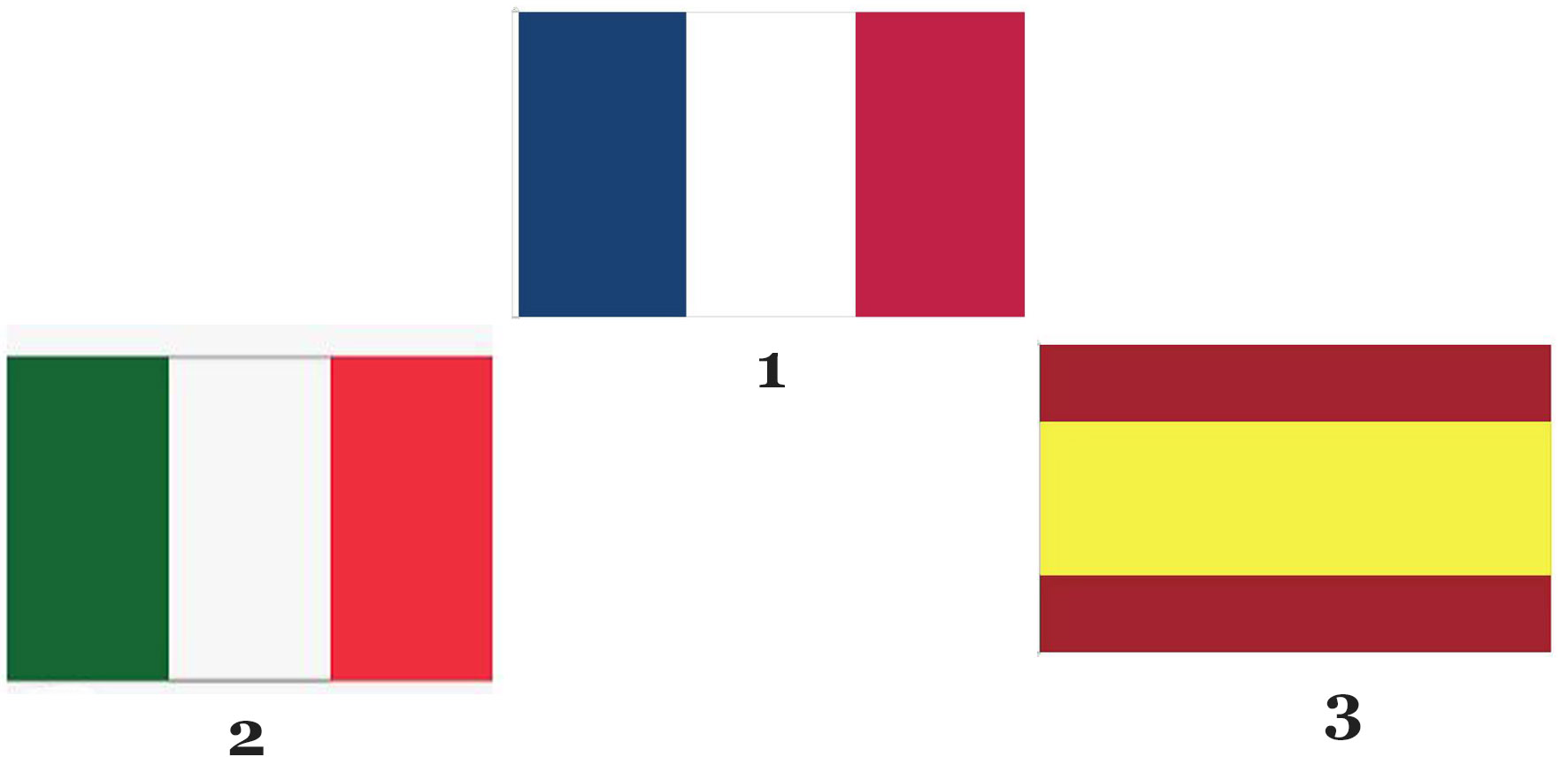
In Italy, the harvest is expected to decrease by 14% (43 million hl) compared to last year and, as in France, the variations between regions are large, from heat to leaf mould in southern Italy and floods in Emilia Romagna. Spain is expected to have a harvest of around 36 million hl, a decrease of 12% compared to 2022 and which is caused by an extreme heat and also drought.
The wine year in Provence
The precipitation
In France, 2022 was an extremely dry year and it continued in the same way in 2023, southern France including Provence being especially affected. Already in the middle of March, irrigation restrictions were introduced in Provence such as not being allowed to fill your pool, wash your car at home, watering only during the night or a total ban on watering except for vegetable gardens, no showering on the beaches, etc.
The wine farmers of Provence, and everyone else, were waiting for rain as the rainfall in the first four months of the year was only 63 mm, against the “normal” 220 mm, in my “reference town” Le Luc in the middle of the Var department. But in May it broke loose, on the first of May there was torrential rain which caused landslide warnings to be issued for the dry ground.
The weekend in mid-May saw even more downpours in the same weather system, which then triggered heavy flooding in Emilia Romagna in Italy. In the first two weeks of May, 80 mm of rain fell in Le Luc. Unfortunately, several areas in Provence were also affected by hail storms, e.g., in Le Luc and in its vicinity such as Flassans -sur- Issole, Gonfaron, Pierrefeu and Vidauban but also more towards Bandol.
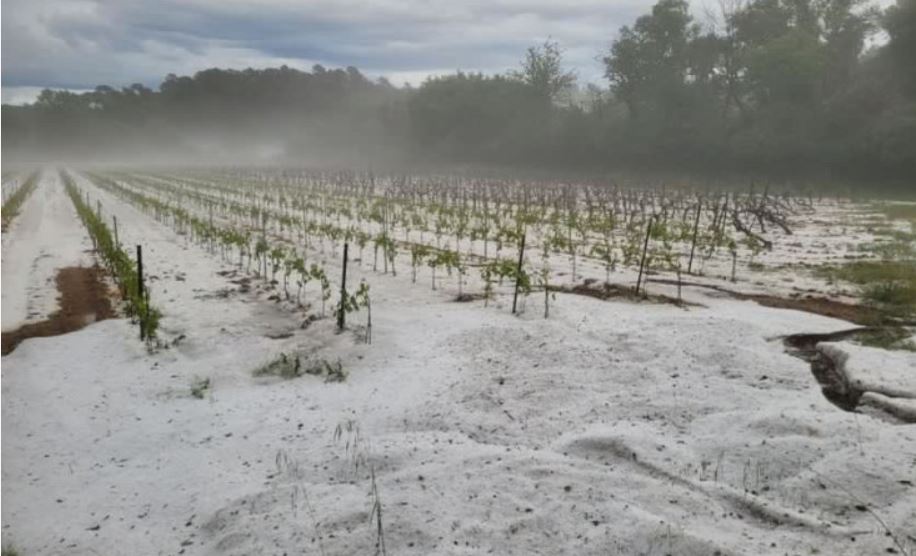
Photo credit: Claire Scappini
The rain continued through the rest of May and into the middle of June, and during these two months there was double the amount of precipitation compared to a “normal” year. The rainfall was certainly anticipated by the winegrowers, but say the joy that lasts. The heavy rains caused leaf mould attacks in many vineyards, which required spraying, either with systemic agents for the “conventional” growers or with copper (downy mildew) and perhaps also sulphur (powdery mildew) for the organic growers.
After the rainy months of May and June, it was dry until the last weekend in August when there was a thunderstorm with 20 – 30 mm of rain, i.e., this came in the middle of the harvest period with the risk of rot attack on grapes and dilution of the juice in the grapes. Those who were late with the harvest had even more problems with the water, more heavy rainfalls came three weeks into September.
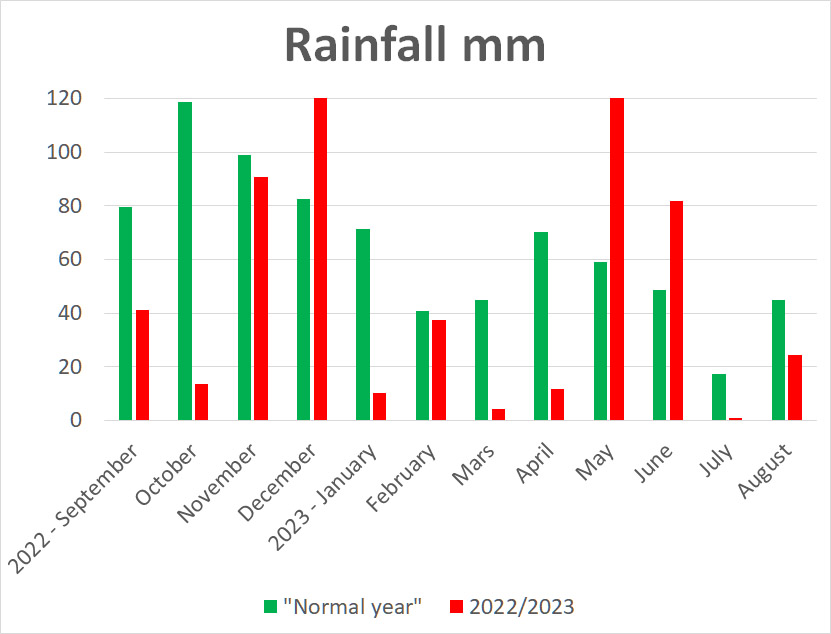
The advantage of all the rain is that the water reservoirs are filled, both those in the ground and those in reservoirs etc. For the “wine year” September 2021 – August 2022, the rainfall was only half of the normal, while September 2022 – August 2023 was a little better with ¾ of the normal rainfall, clearly less than normal but with less risk of the vines suffering water stress compared to 2022.
In order to reduce the risk of water stress, etc., the Ministry of Agriculture issued a decree a week into August that allows irrigation of vines until September 15, but then it only applies that there are no local irrigation bans that prevent this!
I usually have the water reservoir St Cassien northwest of Cannes as a reference and there you can clearly see the difference in precipitation between a normal year and the extremely dry 2022 and 2023.
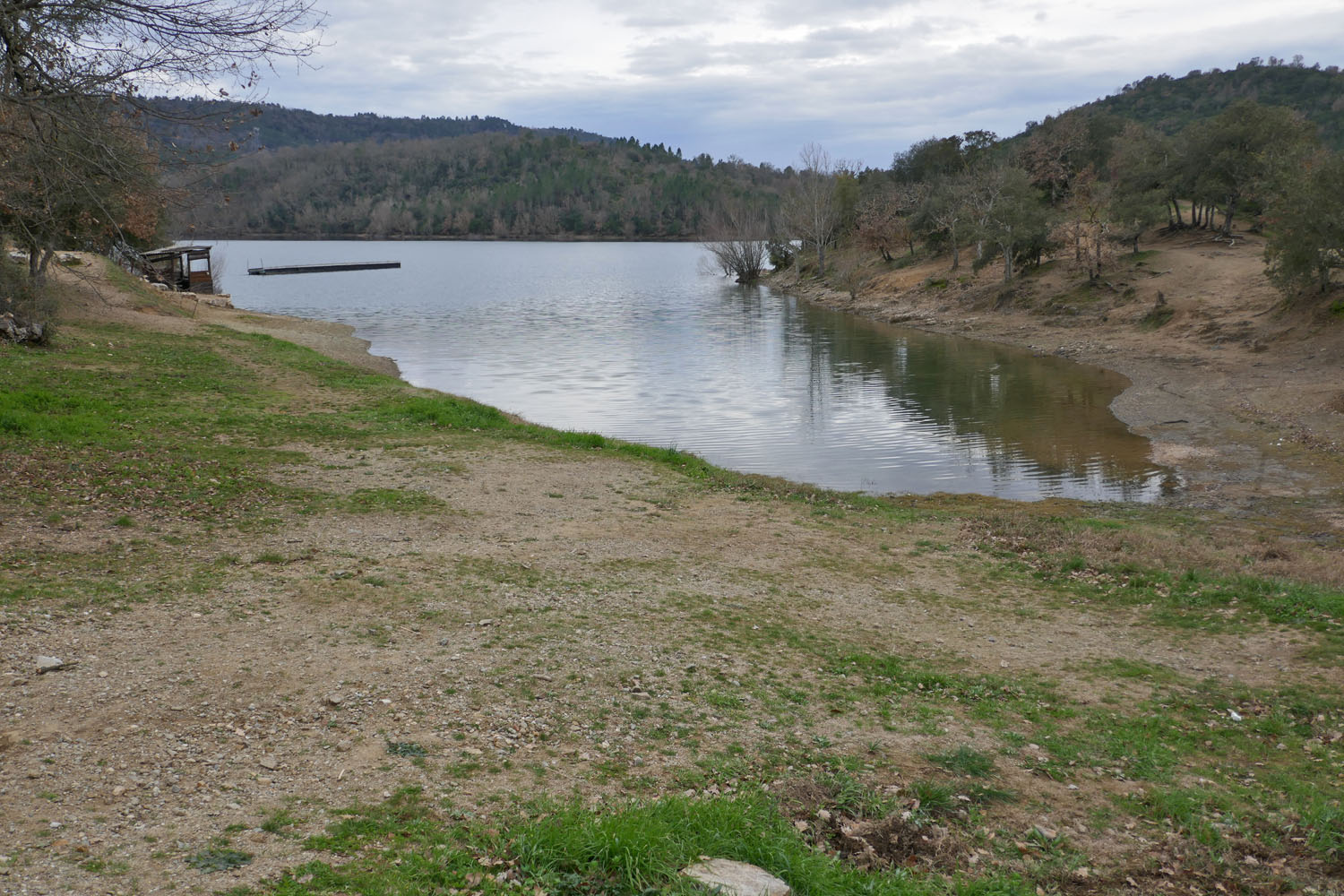
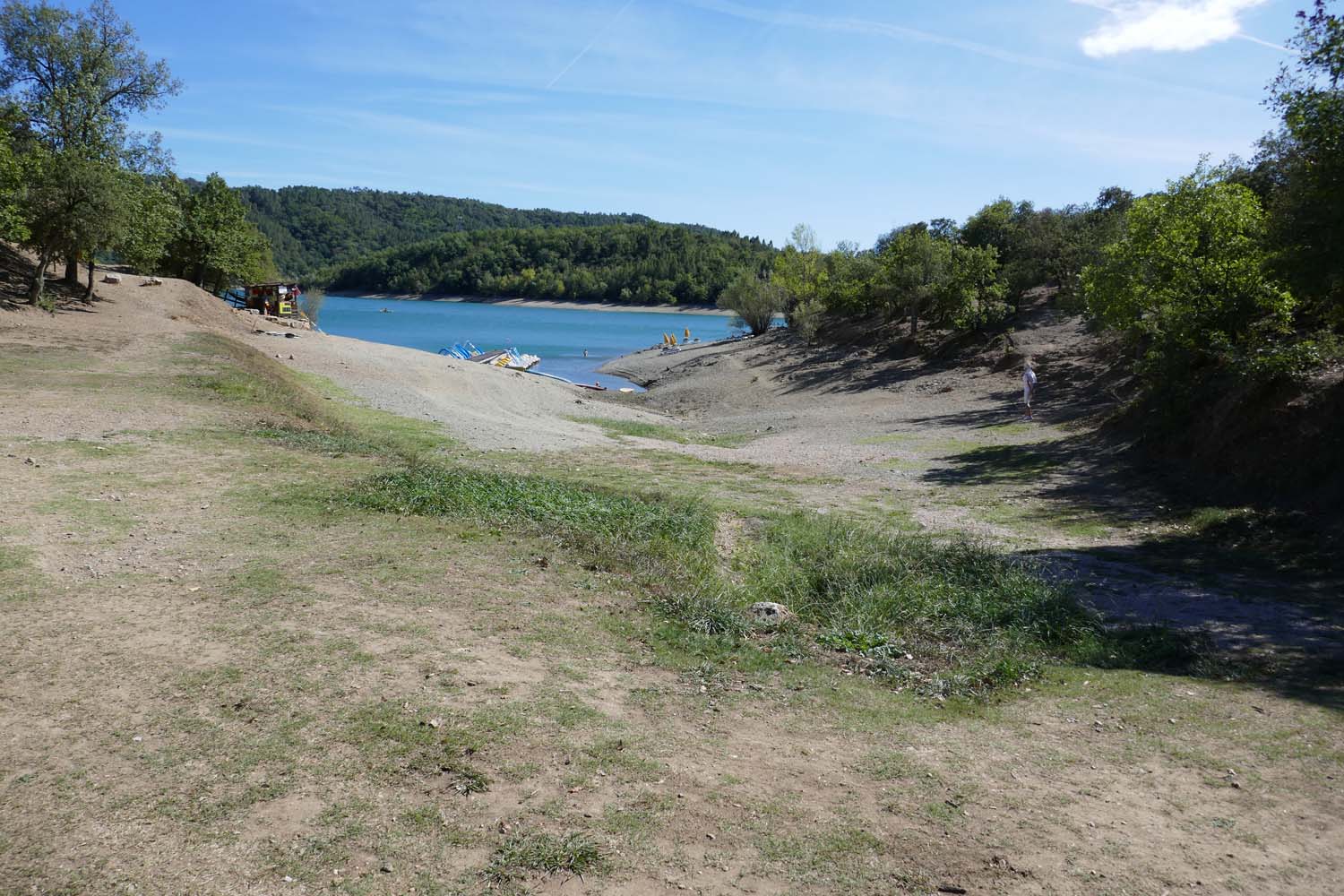
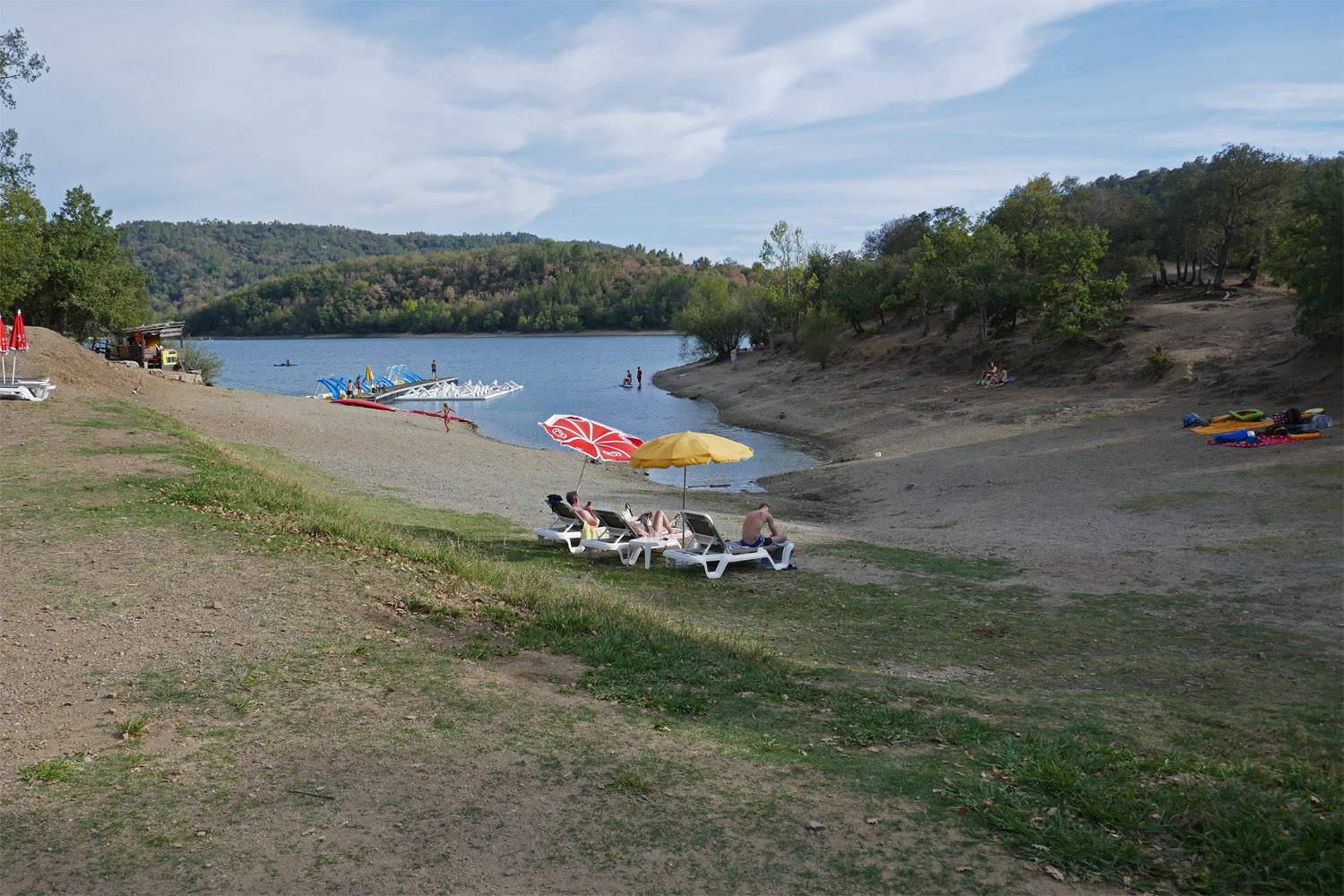
The heat
Every single month in 2023 has had temperatures above normal, and especially the months July and August, so important for grape ripening, stand out with high temperatures, i.e., the same as in 2022. Several heat waves hit Provence with temperatures up to 41 degrees and that when the harvest, which began around August 20, had started! September continued in the same way with temperatures above normal, i.e., with temperatures of just over 30 degrees with a maximum of 34.5 degrees 1½ weeks into the month.
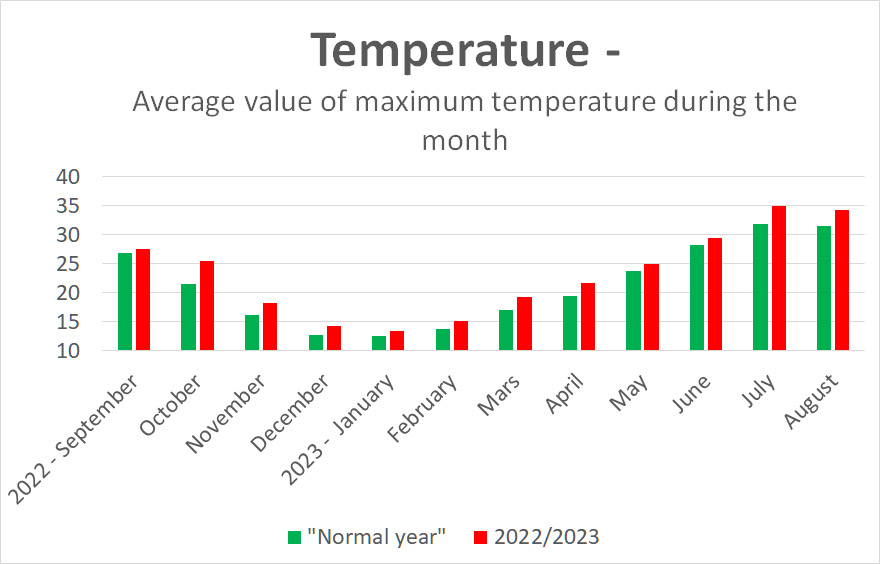
The harvest
It is not only vines and grapes that feel bad in such heat waves, but also the harvest workers. Harvest work in the afternoon was not possible due to the heat, both regarding the quality of the grapes and the health of the harvest workers. So, an early start of the harvesting work right when it gets light is important, alternatively harvesting mechanically already before the sun rises. Further north in Champagne and Beaujolais, which were also affected by the heat in September, six deaths are reported linked to harvesting work in the heat!
The heat meant that the first grapes were harvested in Provence as early as August 8 for the earliest parts but around the 20th the harvest started more widely. Unfortunately, there was a heat wave two weeks into August which provided an extra challenge as the potential alcohol content due to increasing sugar content can increase by two percentage points in a week! In addition, the volume of the grape decreases and becomes more concentrated and the grapes can also shrivel up and become like raisins, especially if the vine due to the leaf mold has been defoliated.
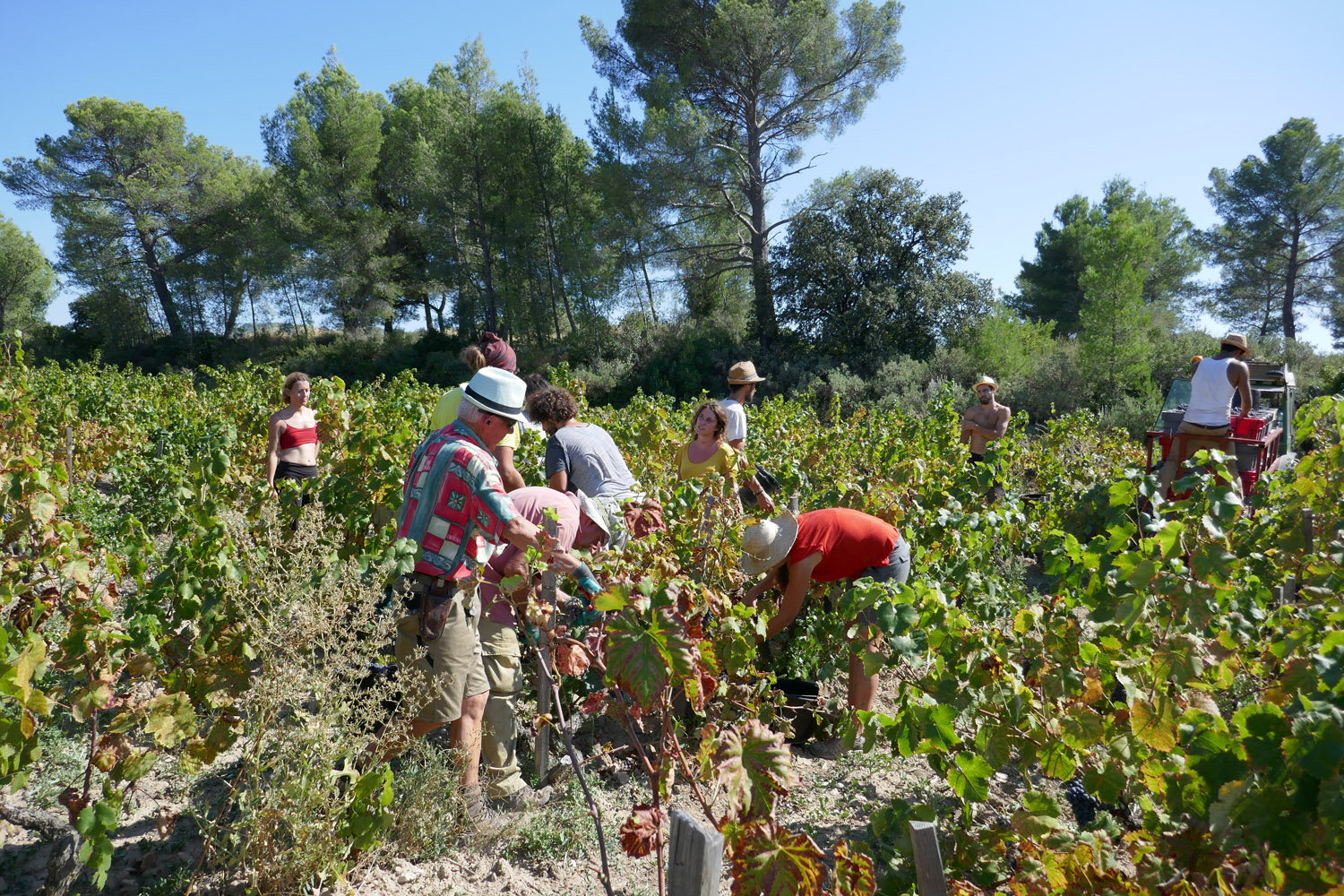
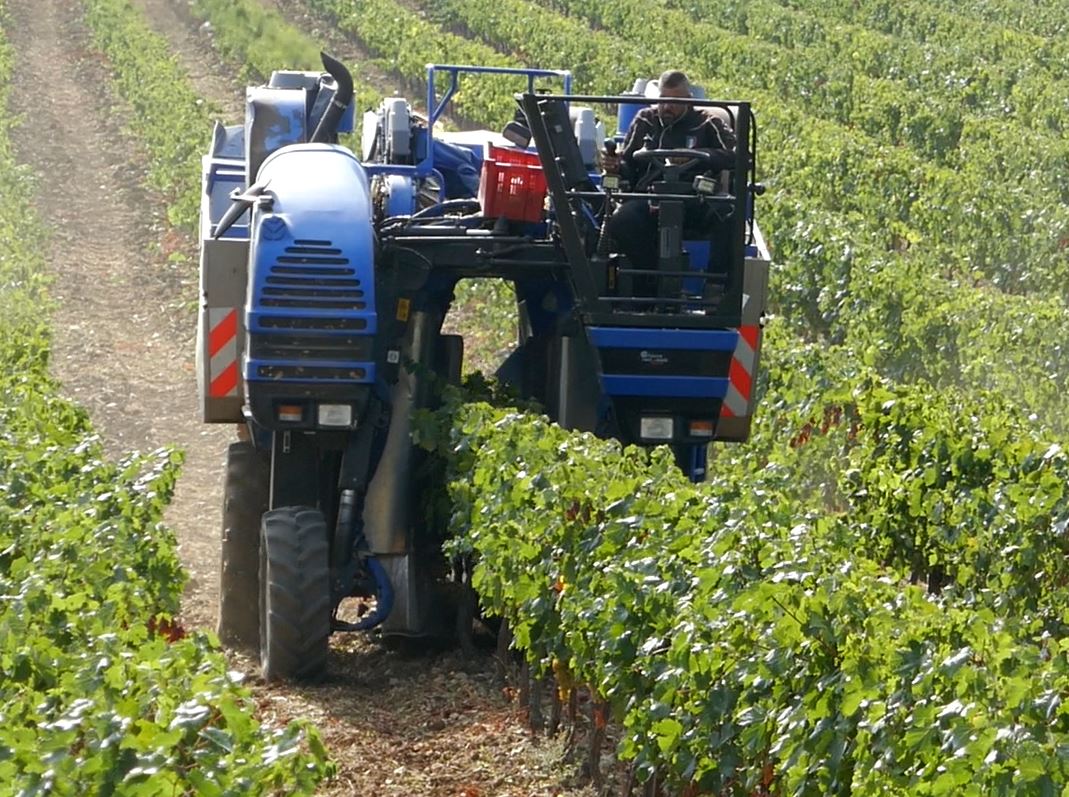
The heat and heat waves also increase the concentration in the grapes and also accelerate the reduction of malic acid in the grapes as well as a reduction in the anthocyanins, so both the freshness and the colour of the wine can be affected. At the same time, the risk increases that the grapes, if they are left in the heat for too long after harvest, can oxidize and spontaneously ferment, so it is important to quickly get all the grape material into the cellar and cool it down, it is “just” necessary to have the capacity for it because everything in almost simultaneously.
Year 2023 seems likely to be quite like the year before. The concentrated grapes are likely to produce very good red wines, while for Provence’s signature, the rosé wines, it can be a challenge to get aromatic and fresh wines with the “right” colour, so for these it is important not to harvest too late when the acid has dropped and the sugar/alcohol content has increased! An aid is then to add acid during the vinification to at least adjust the acid. Even for the white wines, which often require a fresh acidity, 2023 can be a challenge.
Harvest withdrawal
Just as the harvest had started, the “Syndicat des Vins Côtes de Provence” came out with the decision that the harvest withdrawal for rosé wine in Côtes de Provence would be reduced by 10%, from 55 to 50 hl/ha. The justification was “Given the economic situation”. The reason is that since some years ago there has been a slight overproduction of rosé wine in the world and that sales of Provence rosé wines have also decreased. By the end of July, direct sales at the wine producers had decreased by 5% and the large market at the major food chains had decreased by 16% and exports were down by 5%. Through the measure, they therefore want to avoid price reductions and the build-up of wine stocks and you definitely don’t want to end up in the same situation as Bordeaux and other areas where vineyards will be uprooted and vast quantities of wine will be distilled away. More about this in future newsletters.
The Coteaux d’Aix en Provence appellation will not reduce its harvest, on the other hand, the AOC Coteaux Varois will reduce its yields to 42 hl/ha compared to the permitted 55 hl/ha, i.e. a reduction of 23%.
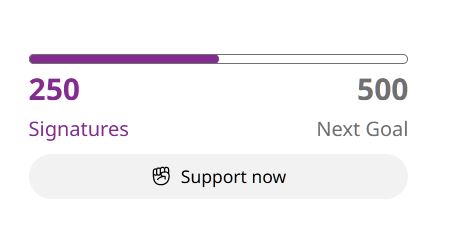
This late decision has upset the winegrowers, who are now collecting signatures for a petition.
Sources: Vitisphere, La Provence, Le Figaro, La Gazette du Var, Syndicat des Côtes de Provence
Published: 2023-09-22, updated 2023-10-25
——————
Surely you have signed up for the Newsletter so that you receive news from the Provence wine world as well as other interesting wine news? If you have already done so, tell your wine-interested friends!

Provence expert Göran Boman, Author of the books “Provence – Vita, röda och även roséviner” and “The Wines of Provence – Tricolour”.
